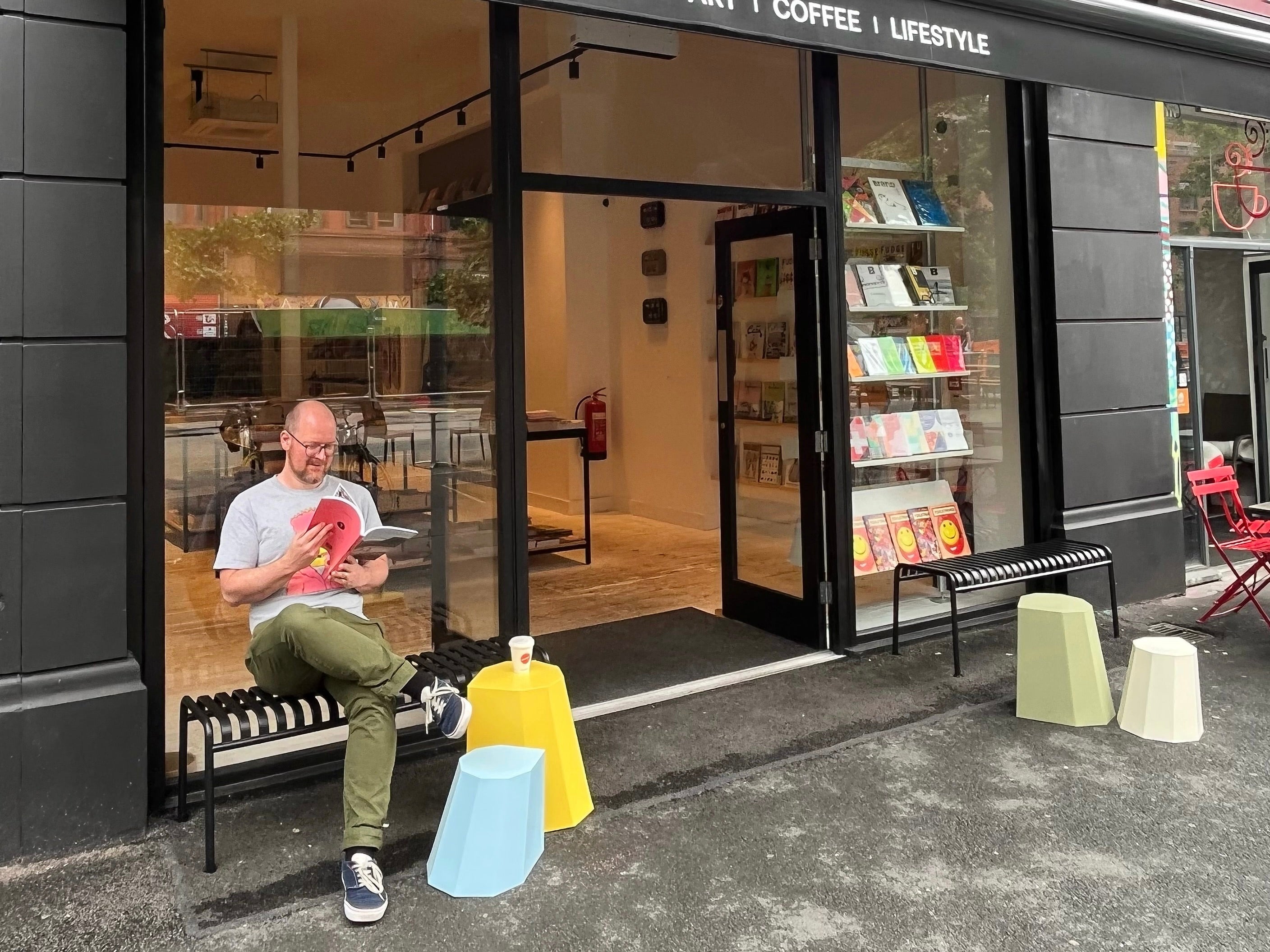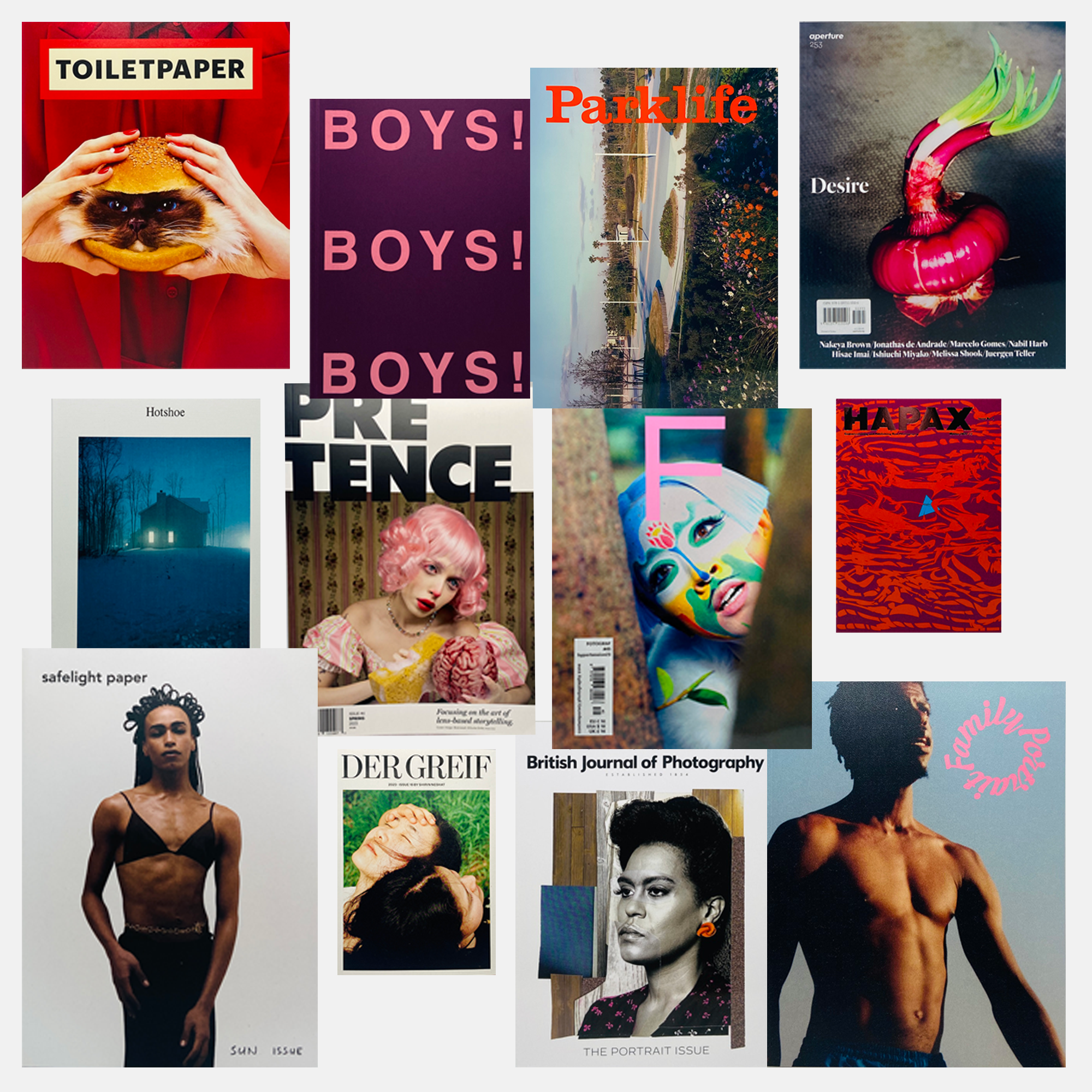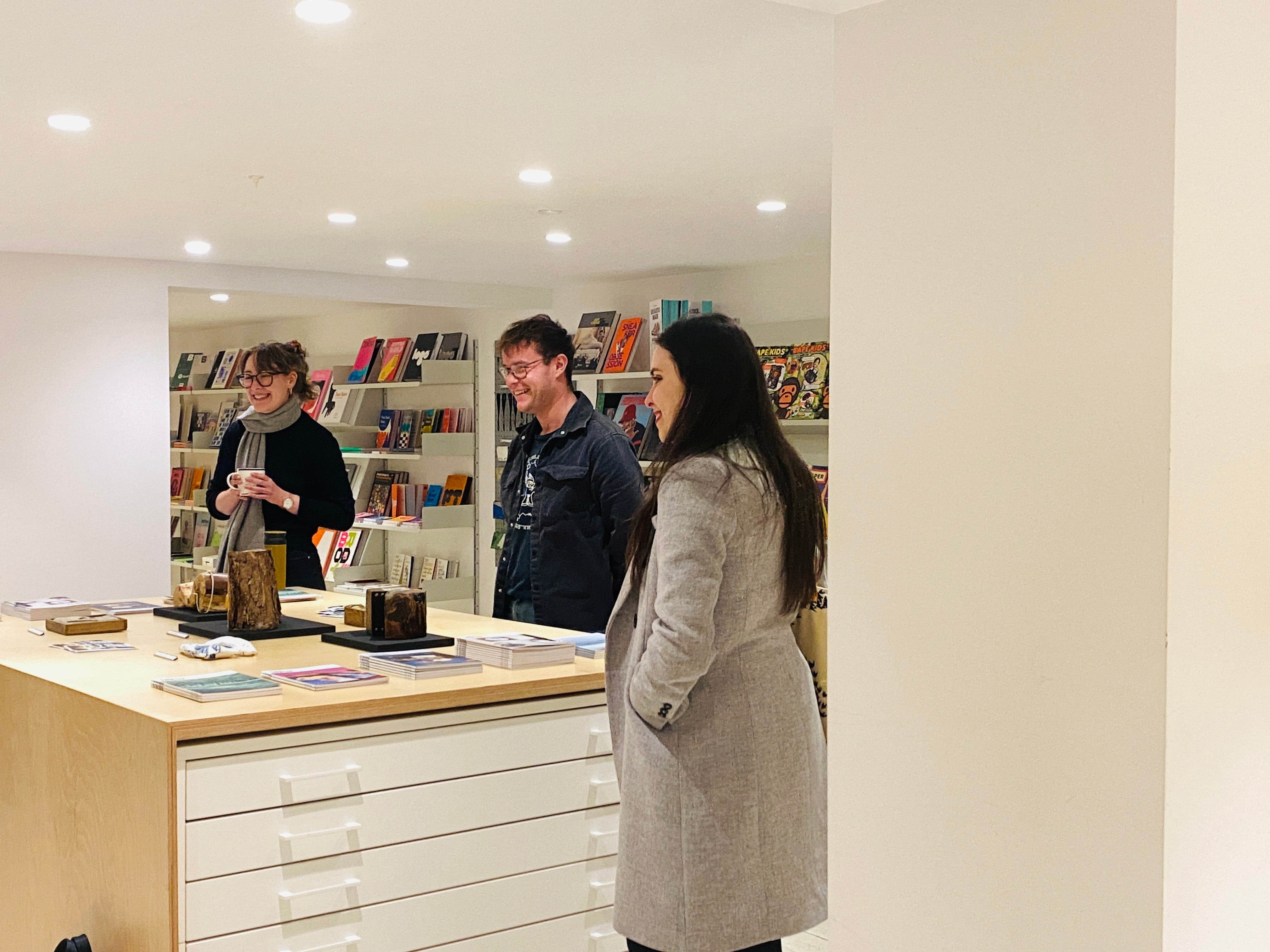Meet Robin Maude and Matthew Palmer, planners from Vitsœ, who were residing at UNITOM for 3 days in July 2023. We were thrilled to welcome them to our store! During their stay, surrounded by a big Vitsœ system seamlessly integrated into the fabric of UNITOM, they provided expert guidance and insights as planners to those seeking to explore the world of Vitsœ. Join us as we delve into their experiences, discuss Vitsœ's design philosophy, and uncover the stories behind this exceptional collaboration between Vitsœ and UNITOM.
Vitsœ has a rich history. Could you provide us with a brief overview of how the brand was founded and how it has evolved over the years to become what it is today?
Matthew Palmer - A short history - a Danish name, a German designer, British-owned.
Niels Vitsœ (pronounced ‘vit-sue’), Otto Zapf and industrial designer Dieter Rams founded a company called ‘Vitsœ+Zapf’ in Frankfurt in 1959. Otto Zapf left the company in 1969 and it became, simply, Vitsœ.
In 1985 Niels Vitsœ and Dieter Rams were introduced to a Brit, Mark Adams, who set up Vitsœ Ltd in the United Kingdom. Following the retirement of Niels Vitsœ, Mark became managing director of Vitsœ and moved the business to London in 1995.
More recently, in 2017, Vitsœ moved from London to a new site in Royal Leamington Spa. Vitsœ designed a low-energy, modest, expandable building that will adapt continuously in response to the changing needs for many decades.
Robin Maude - The keyword in the question is ‘evolved’, the products haven’t changed very much at all. But they have stayed relevant and up to date, most wouldn’t notice but Vitsœ’s shelving-system, chair programme and tables have undergone a huge amount of small changes - some visible, a lot not.
The business in turn has evolved and adapted to the world around it, with many small and different changes forced or calculated.
What inspired you to pursue a career as planners for Vitsœ?
MP - Like many Vitsoids (the oddly-coined word that we use for colleagues) my journey to Vitsœ isn't straightforward. I've held a passion for architecture and design from a young age, which led me to study architecture at university. Equally, travel has been a source of inspiration over the years. Previous to Vitsœ, I spent 10 years in the travel industry in roles where communication and relationships are key. As was the case for many people, 2020 was a challenging, disruptive year. This time led me to reevaluate my career - what impact my role in travel had, what kind of company I wanted to work for and what was best for my young family. A Creative Mornings talk by Mark Adams inspired me to apply for the role, combining my passion for design and skills developed during my time in the travel industry. The prospect of free lunches also helped….
RM - In my case, it was a reaction to my previous career in the fitted-kitchen design world which was very much fashion and trend-led. I came across Vitsœ and they answered questions for me. What is good design?
Matthew, you mentioned your background in architecture, and Robin, you have a fine-art degree. How do your diverse skill sets come together in your roles as planners for Vitsœ, and how does this multidisciplinary approach benefit the brand?
MP - Diversity is the keyword. The planning team hosts a wide range of skills and backgrounds - from architecture and fine art to product design and business management. This diverse skill set is needed as the role of a planner is not solely design led; it is about people, relationships, spotting trends, and product knowledge (not just Vitsœ).
RM - My creative education was mainly focused on pursuing my studio practice, which promotes a self-motivated, quiet practice, perhaps even an introverted one.
But there is a major part of any creative education which centres around critique and collaboration. Sharing your ideas with your peers allows you to rationalise and reflect on concepts from many perspectives. This element of my fine art training I carry with me every day. I trust in my intuition but collaborate and absorb others’ knowledge.
Dieter Rams famously came up with 10 key principles for good design. How does that influence your work at Vitsœ?
MP - We live in a time where throw-away culture is prevalent - be it the breakfast coffee cup, the flat-screen TV or the poorly manufactured DIY piece of furniture. The principle that speaks most to me is “Good design is long-lasting”. We’ve all purchased items from a reputable business, expecting them to be of good quality, and to last a long time - but have been let down. There is some pride in knowing what we produce is good design and is long lasting.
RB - I have always liked the “Good Design is unobtrusive” mainly because it sits within the 10 principles quietly as it should do, it’s zen-like but kind of locks all the other principles together. How does that influence my work at Vitsœ … If I am honest, I find it difficult to honour this principle every day. But there are people at Vitsœ who I have observed and taken inspiration from over the years that have this one sussed. The unflappable, calm, rocks of the business that we all depend on.
What are some unique aspects of Vitsœ's approach to planning and design that set the brand apart from others in the industry?
MP - People. As planners and the business as a whole, we care about what we do and the products that we produce. So much so that we plan each and every furniture-system that is ordered with us, nothing is left to chance. To the annoyance of few, but the delight of many, we guide customers through the planning process. We consider every detail, from what their walls are made of, what other furniture is in the room and ultimately what their shelves will be used for.
RM - The value of interacting with people personally, to share knowledge and support our customers. I take pride in offering expertise and experience to people directly. Too often the customer relationship is severed by keeping it at arm's length under the guise of efficiency. More progress can be made more effectively by simply conversing - this can take longer but generally, the result is more positive.
Can you tell us a bit about some of the plans you made during your residency at UNITOM?
MP - Preparation is key. Planning for the residency began at the start of the year in earnest. Colleagues from a variety of teams - assembly, installation and communications - all referred connections in the city, meaning that we had a wealth of contacts to reach out to. We’ve visited our own customers to see how they use the shelving-system - such as Sneaker Pharm and the Manchester School of Art.
RB - The key part of the planning was to come and visit UNITOM in advance. We instinctively thought we would meet a group of lovely people and would make for a great partnership. But until we get together we never truly know.
And this is a good opportunity to say thank you to UNITOM for being so genuinely enthusiastic, supportive and welcoming.
As planners for Vitsœ, you likely encounter various challenges during the design process. Can you tell us about a particularly complex project and how you overcame the challenges involved?
MP - I cannot pick out one particular project as such, but planning re-installations can be both challenging and satisfying. The challenge is to use a range of components, ordered over many years, perhaps various accounts and after previous moves. Simply tracking down every component can be a challenge. The satisfaction comes from using every single component and the customer not having to buy anything new.
RB - I was at the centre of our London shop move in 2019 which was an intense couple of months. I am pretty proud of what was achieved back then - being without a place to meet with our customers and colleagues for any length of time can be very damaging on many levels.
Juggling that project while also trying to keep in touch with my customers was a big stressful challenge and a fantastic opportunity. It was exhausting, but when all was done, a huge buzz and relief.
Somewhat related – partly due to opening a new shop and closing shortly after –
the pandemic with its lockdowns was a challenge for us to engage with our customers which we successfully navigated, but the longer that scenario went on, the more fractures in relationships you could see appearing.
So I guess I am saying that maintaining those meeting spaces, venues for collaboration and support is a regular challenge and a seriously important one.
It is well known that Vitsœ focuses on building long-term relationships with its customers. Can you share an anecdote that exemplifies how Vitsœ goes above and beyond to cultivate these relationships?
MP - Our role as a planner is often misinterpreted as a sales role - but in fact, it is more accurately a role built around communication and relationships. These relationships often surprise customers, but ultimately we rely on word-of-mouth and our customers are key in spreading the word for us. Recently, one of my customers in London had run into trouble installing their shelving-system. They had installed numerous systems before but had run into a little trouble with a simple system above a door. Fortunately, we have a team of expert installers and luckily we were only a short drive away from the customer. Jody, one of our London installers, popped around during his lunch break to give advice and offered to re-install so that the customer had exactly what they wanted. Naturally, the customer was over the moon.
RB - Our Vitsœ Voice publication is a great example of the customer relationship being at the centre of everything we do. Our customers are so generous to share their stories and allow us to praise them as supporters and represent the relationships we build together.
Sometimes it's the small gestures. On a family day trip to London, Jana (the young cover star of Vitsœ Voice issue-5, whose family had planned with me on two or three occasions before it was her turn), visited Vitsœ to start planning her bedroom work and play shelving-system. She was completely engaged with the process and super excited, and when she left with a couple of colourful Vitsœ bookmarks to use in her books, it just felt like a small but significant moment.

You have been here with us for 3 days. How does seeing Vitsœ’s 606 Universal Shelving System in a real-life retail setting like UNITOM impact your understanding of its versatility and practicality? What has been the most valuable lesson or memorable interaction during your time here?
MP - We always enjoy seeing Vitsœ out in the wild, seeing how it is being used - often markedly different from how we planned or envisioned the arrangement. This just goes to show how adaptable the 606 system is.
I made a quick visit to Vincent at Sneaker Pharm in Hatch to see how he is using a 606 system that I planned a few years ago. Currently, the system is stacked full of refurbished trainers and equipment - a real workhorse for Vincent.
Naturally, the welcoming nature of everyone at UNITOM really put us at ease - we felt like part of a team. Oh, and some of the best coffee around!
RM - It's just that, the versatility and the practicality. On Wednesday morning in a little over an hour and with some chatting we had set up our stall in your shop. It just felt natural and unobtrusive.
Two memorable interactions, one: a visitor telling us that we were the talk of his apartment building.
The other, the more touching, was getting to know the UNITOM team and sharing common interests and - most importantly - getting all of your food tips. It feels like we need a bunch more visits to try every recommendation.
What advice would you give to aspiring planners or individuals interested in pursuing a career in design and sustainability, especially within a brand like Vitsœ?
MP - Be open and honest. Talk, listen. Be thoughtful, careful and tread lightly.
RM - Come talk to us, simple as that really.
Lastly, can you share your favourite aspect or feature of the Vitsœ system at UNITOM and why it holds a special place in your heart as planners from Vitsœ?
MP - Each and every system comes down to one thing - E-Track. The simple piece of aluminium - named E-Track due to the fact that it makes an ‘E’ in profile - is the way that every shelf, cabinet and table is hung. Components can be moved with ease, flipping, rotating or simply moving shelves to another place - the pinhole system allows for ultimate flexibility. Then, if you change location, take it off the wall and use it again. The E-Track is the perfect example of good design.
RM - When I was interviewed for the job at Vitsœ I was asked what item of furniture holds great importance to me. I said the dining table, any old dining table because it’s where we all get together to nourish ourselves in body and soul.
We brought an integrated table to UNITOM to share as a workspace and to welcome and interact with our guests. A lot of great things can happen around a table.
________________
A big thank you to Robin Maude and Matthew Palmer for their insightful residency at UNITOM, and to all the customers who engaged with them. We're excited about the potential for future collaborations and warmly invite everyone to experience Vitsœ shelves at our store – UNITOM is #VitsoeNearYou.




